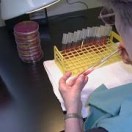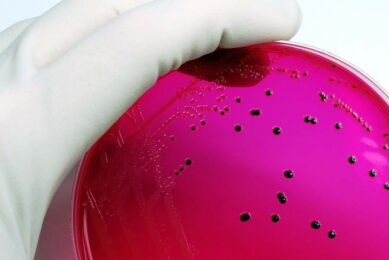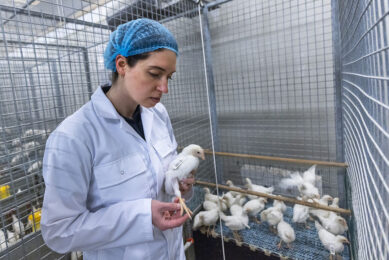Salmonella report to go public

A new survey by Consumer Reports (CR) has found that the vast majority of fresh whole chickens sold in America carry either salmonella or campylobacter, two leading causes of bacterial food poisoning.
The US Department of Agriculture sends inspectors into processing plants, where they can reject chickens with visible problems. Birds are also checked for salmonella, and if a plant fails often enough, the USDA can suspend production, but the agency has no power to fine or punish operators.
The numbers are startling. According to Consumer Reports, “…campylobacter was present in 81 % of the chickens, salmonella in 15 %; both bacteria in 13 %. Only 17 % had neither pathogen.” Those are the highest numbers for contamination found since 1998.
“No major brand fared better than others overall,” CR reported. “Foster Farms, Pilgrim’s Pride, and Tyson chickens were lower in salmonella incidence than Perdue, but they were higher in campylobacter.”
“When we took bacteria samples from contaminated broilers and tested for sensitivity to antibiotics, there was evidence of resistance not just to individual drugs but to multiple classes of drugs. That indicates there may be fewer to choose from, and infections may be more stubborn,” said one USDA representative.
The USDA had considered publishing the names of plants that have failed salmonella tests, according to Consumer Reports, but left that to a private group.
The numbers are startling. According to Consumer Reports, “…campylobacter was present in 81 % of the chickens, salmonella in 15 %; both bacteria in 13 %. Only 17 % had neither pathogen.” Those are the highest numbers for contamination found since 1998.
“No major brand fared better than others overall,” CR reported. “Foster Farms, Pilgrim’s Pride, and Tyson chickens were lower in salmonella incidence than Perdue, but they were higher in campylobacter.”
“When we took bacteria samples from contaminated broilers and tested for sensitivity to antibiotics, there was evidence of resistance not just to individual drugs but to multiple classes of drugs. That indicates there may be fewer to choose from, and infections may be more stubborn,” said one USDA representative.
The USDA had considered publishing the names of plants that have failed salmonella tests, according to Consumer Reports, but left that to a private group.












